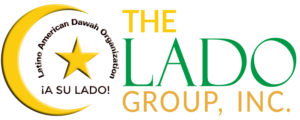Islamic Values in Latin American Culture
By Shaikh Yahya Suquillo
Islamic Values Already Present in Latin American Culture
Measuring Latin American culture in terms of the development of Islamic cultural values is difficult except for a few aspects. One reason for the unawareness of Islamic cultural values present in Latin American culture is an educational system that does not mention that Islamic values influenced Latin American culture during centuries of Islam’s existence within the Spanish culture.
Consider the great Islamic architecture within some cities in South America. In Brazil, for instance, some old churches are decorated with Arabic calligraphy art carved by Muslim slaves that were brought to America. Major and minor vestiges of Arabic art are found in some Central American countries. Within Quito, the capital city of Ecuador, the popular Andalusian Spanish architecture style can be found, which was copied from Islamic art that Spaniard architects learned from Muslims. Typical mosque domes and arches were applied to churches throughout South America.


Quito’s historic downtown area is jam-packed with Andalusian Islamic architecture. Interior gardens that allowed uncovered women to enjoy the outside atmosphere without having to go outdoors can also be found. What is ironic is little presence is given to lavatories and personal hygiene locations at the Spaniard architect colony houses. While on the contrary, the relevance given to these places in the Muslim world are widely known – to help Muslims fulfill cleanliness needed for religious duties.
The influence of Muslims in the past was mainly based on major and minor concentrations of Muslim immigrants that took place in different areas of this vast continent. Examples of major Muslim immigration in a short span of a century can be seen in countries such as Argentina and Panama, which are Spanish-speaking. Major Muslim migration also took place in Guyana, Trinidad & Tobago, which are English-speaking communities in Latin America. Brazil, which has a Portuguese-speaking community, holds the largest Muslim community in South America.
Hard working principles in industry, examples of honest trading and fine manners, architectural art, and typical Arabic food are no doubt part of the genuine contribution that our honorable Muslim ancestors helped in the development of Latin American culture. May Allah SWT reward them Inshallah accordingly. In this analysis, we are far from bringing justice to all the contributions of our Muslim ancestors. We must now decide what we can do for a better future!
A Remarkable Islamic Educational Event in Ecuador
Sister Shahzady is a 12-year-old Muslim girl who wears the Islamic veil. She is one student among five hundred children attending “Martim Cerere School” in Quito, Ecuador. Her Social Science and English teachers had endorsed her to be the coordinator of the first Islamic booth to be presented for parents and teachers on Monday, May 30th.
“Chabela,” her Science teacher said, “We could not wait this year to let the children know more about Shahzady’s background.” She continued, “Why does a native Ecuadorian girl wear a veil daily? Why does she fast one month a year? So, we decided to encourage her and her classmates to educate others about the Islamic culture.”
Preparation for the booth took the children a few weeks and focused on Islamic history, belief, housing, dress code, and food. Shahzady’s group, which consisted of two boys and three girls, visited Masjid Assalaam to get information about Islam. The group of children also finalized the details for the booth with help from their parents.


At the end of the presentation, the teacher announced to the children that they got honor points because they had the best booth! Congratulations to all of them! Definitely, events like this one about educating others about Islamic culture is one of the many activities that are shaping the image of Islam among the people of Latin America.
The Centro Islamico del Ecuador
The Centro Islamico del Ecuador, aka Masjid Assalaam, is a non-profit organization founded by the Grace and Mercy of ALLAH SWT on October 15, 1994. This is the first Muslim religious organization credited as such by the Ecuadorian Government. The religious activities, as well as social, cultural and educational are conducted according to Muslim Sunni traditions. This center is organized into various committees to meet the needs of Muslims and receives no financial support from any foreign country.


The masjid started as part of the house of one of the members of the community in 1994. The first floor of this house was converted as a mosque. The interior walls were thrown down to make the mussala. The Islamic center is located at a convenient residential area. The masjid can be found behind the French Embassy, two blocks from the American Embassy, three blocks from the Egyptian Embassy, and five blocks from the Russian Embassy.


Shaikh Yahya Suquillo, Imam
Islamic Center of Ecuador
www.centroislamico.org.ec
